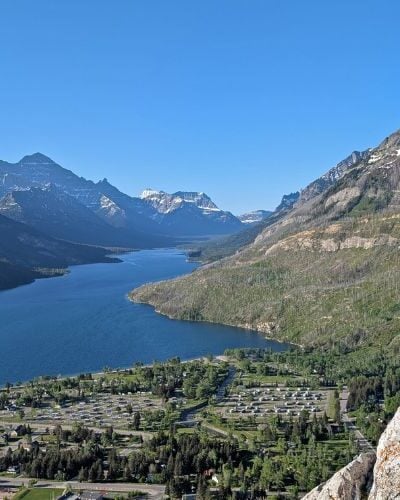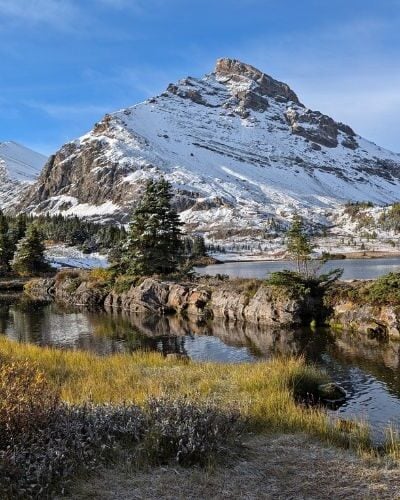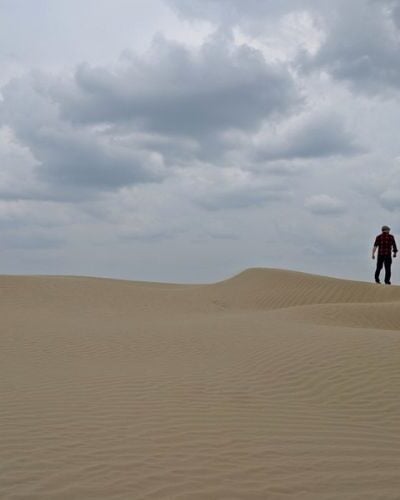The Mingan Archipelago National Park Reserve was the number one reason why we wanted to drive the entirety Québec’s Whale Route (Highway 138). And it did not disappoint!
A collection of 20 larger islands and about a thousand smaller islands and islets, the Mingan Archipelago is best known for its amazing limestone monoliths (rock pillars), which are shaped by glacier activity and erosion.
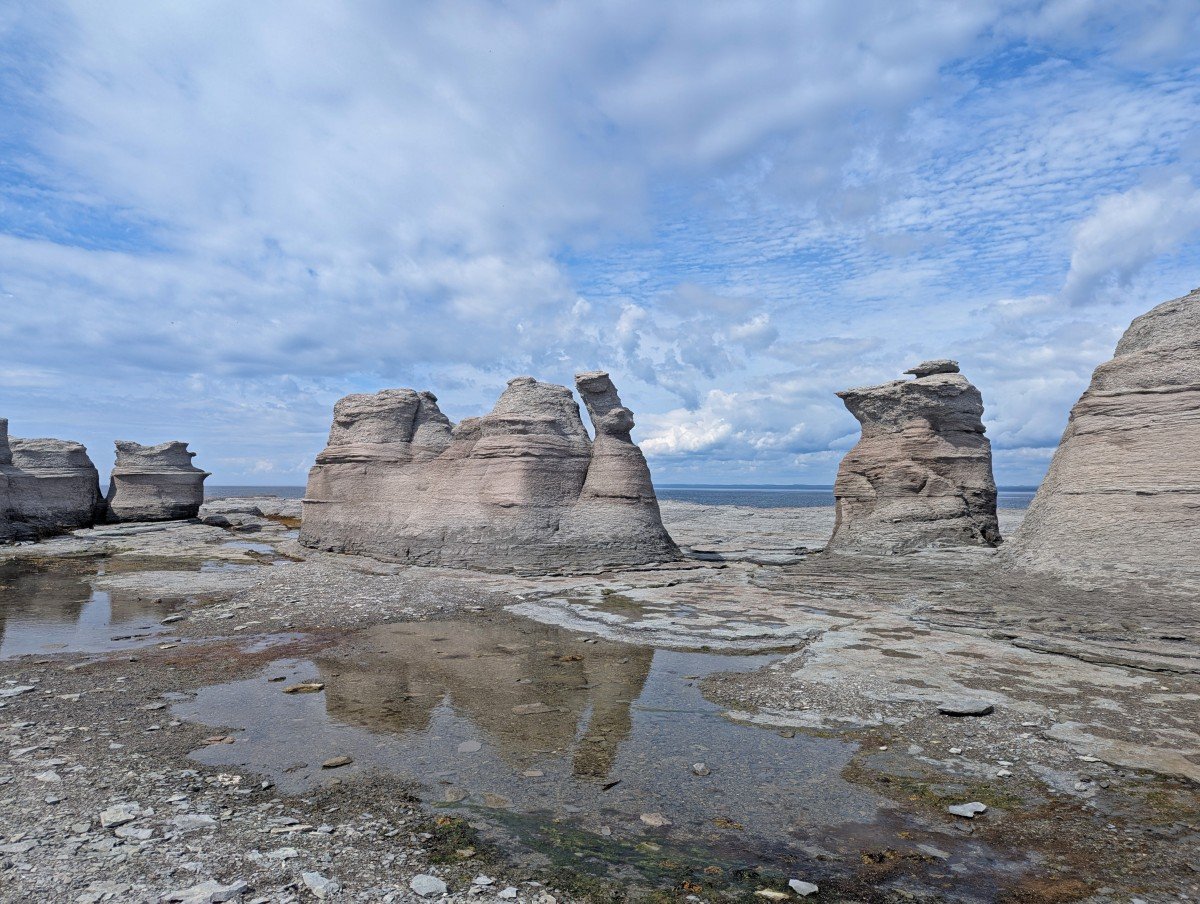
In addition to the monoliths, Mingan hosts colonies of threatened shorebirds (and puffins!), historic lighthouses and unusual Arctic-alpine plants. The islands are fossil rich too. 13 species of whale live in the St Lawrence River surrounding the islands, along with three types of seal.
Boasting remarkable beauty and intrigue on shore and from ocean alike, the Mingan Archipelago is a must visit. Accessible only by boat or kayak, the journey there is an adventure in itself.
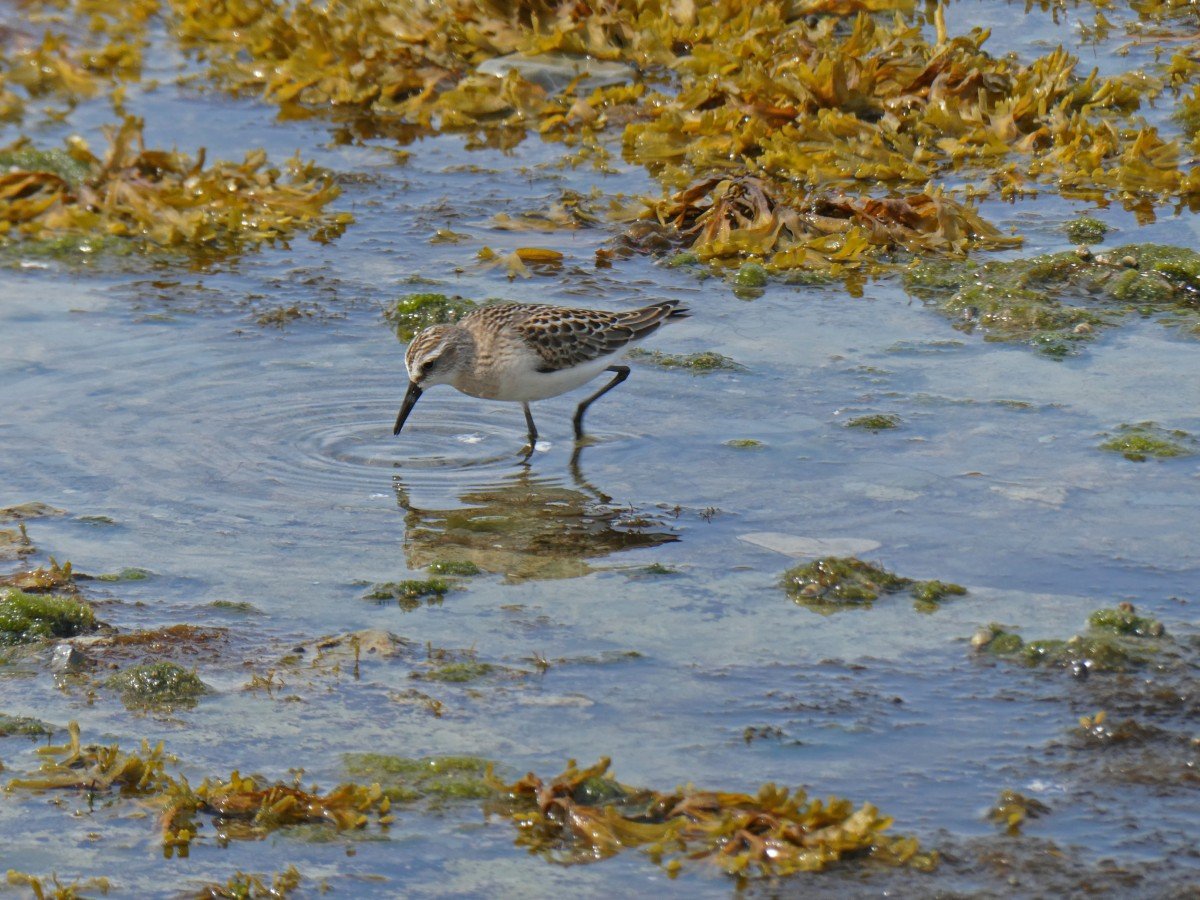
JR and I have visited many places across Canada now and honestly, Mingan ranks as one of the most special. It’s uncrowded, scenic, and rich in natural wonders.
In this post, I’ll share everything you need to know about planning a trip to Québec’s beautiful Mingan Archipelago, including how to get there, what to pack, when to go, which islands to visit, where to stay and more!
This post is in partnership with Quebec Maritime. There are affiliate links below – if you make a purchase, we may receive a percentage of the sale.
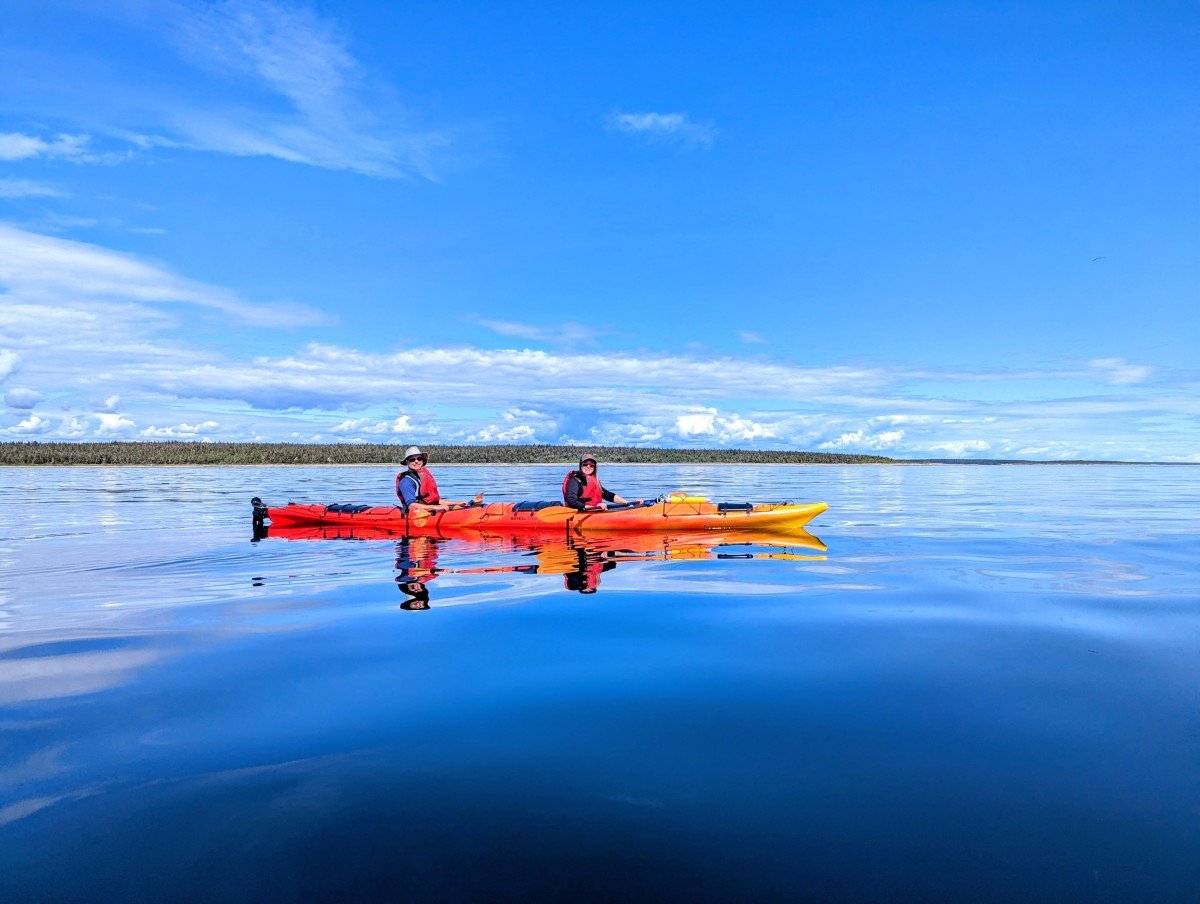
Introducing the Mingan Archipelago National Park Reserve
The Mingan Archipelago is a coastal chain of more than 1,000 islands and inlets on Québec’s Côte-Nord (North Shore).
Though the islands may seem compact, they support remarkable biodiversity and a variety of ecosystems, including boreal forests, peat bogs, tundra-like barrens, rugged cliffs, and rocky beaches.
More than 80 species of rare plants can be found here, along with 200 resident and migratory bird species (more than 80,000 total). Easily recognisable for its colourful beak, the Atlantic puffin is a favourite to spot.
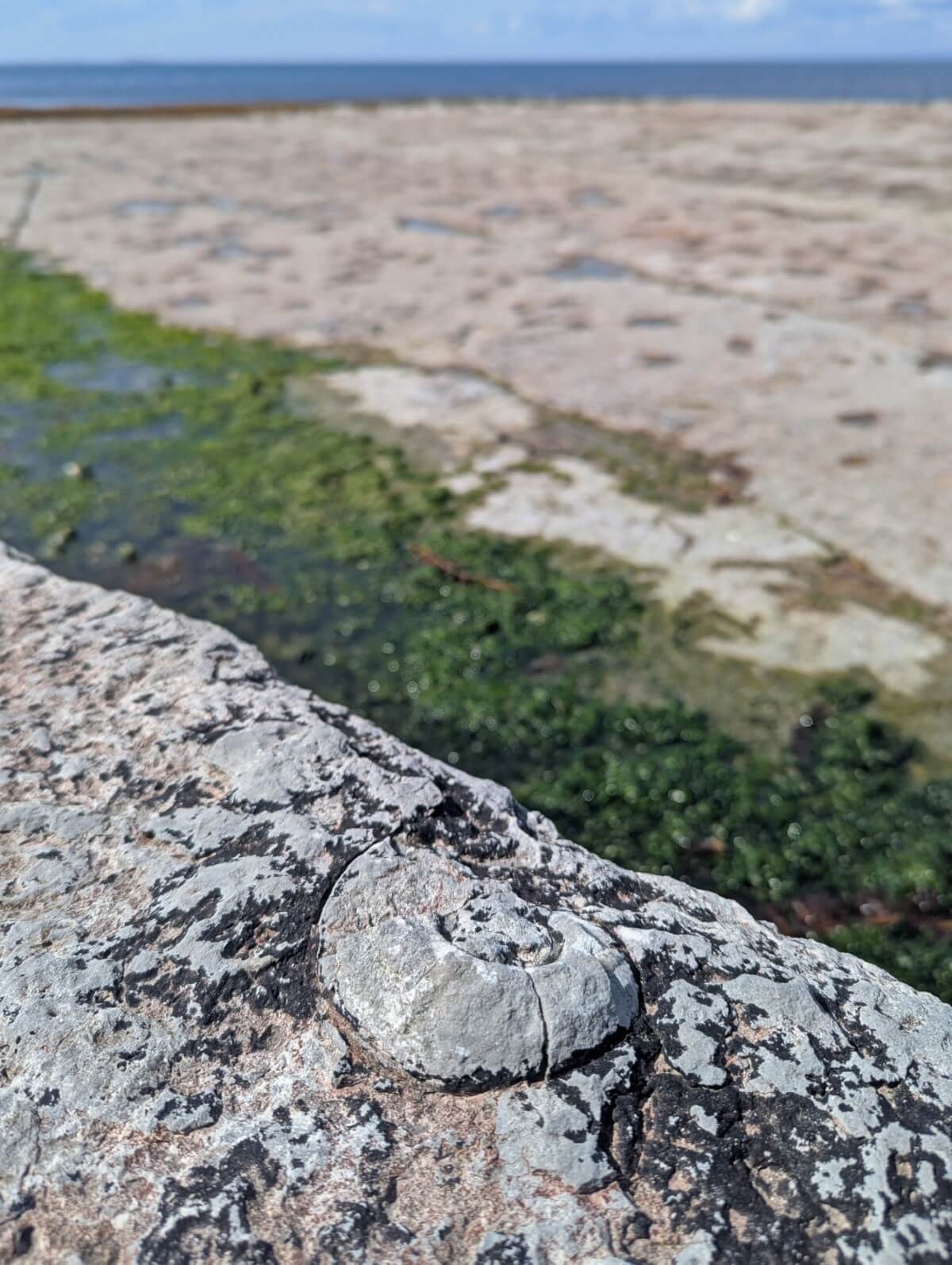
The Mingan Archipelago’s most striking feature is the monoliths – limestone pillars up to 13 m high, carved into extraordinary shapes by natural forces. They fringe the shorelines of many islands like ghostly sentinels, with fossils are often embedded in the rock.
Parks Canada offers more than 80km of maintained hiking trails and interpretation on the main islands. It’s also possible to stay overnight too, in a lighthouse keeper’s cottage, campgrounds, oTENTiks and teardrop shaped Ôasis accommodations.
Access to the Mingan Archipelago is by water only (boat or kayak), keeping the islands uncrowded and making each visit feel like an adventure. Those who stay overnight are rewarded with unmatched solitude.
Choose between locally operated boat tours or kayak tours. We did both, each experience worthwhile to see the islands from a different perspective.

The Mingan Archipelago: A brief history
A tropical sea covered this region about 465 million years ago. Fossils from the marine animals of this time can easily be found on the rocky beaches of the islands.
In more recent history (around 20,000 years ago!), massive ice sheets up to 2.5km blanketed the area. The immense weight of the glaciers caused the land to sink.

Fast forward another 10,000 years and the glaciers began to melt. The ocean level rose but so too did the soft 450 million year old limestone of the Mingan Archipelago.
2800 years later, the tip of the islands emerged above the water, only to be eroded by waves, wind and seasonal freezing/thawing. This produced the first monoliths.
As for humans, the Mingan islands have been visited by humans for at least 2000 years. This is the traditional territory of the Innu people (‘human being’ or ‘person’), who traditionally followed a seasonal cycle of hunting, fishing, and gathering.
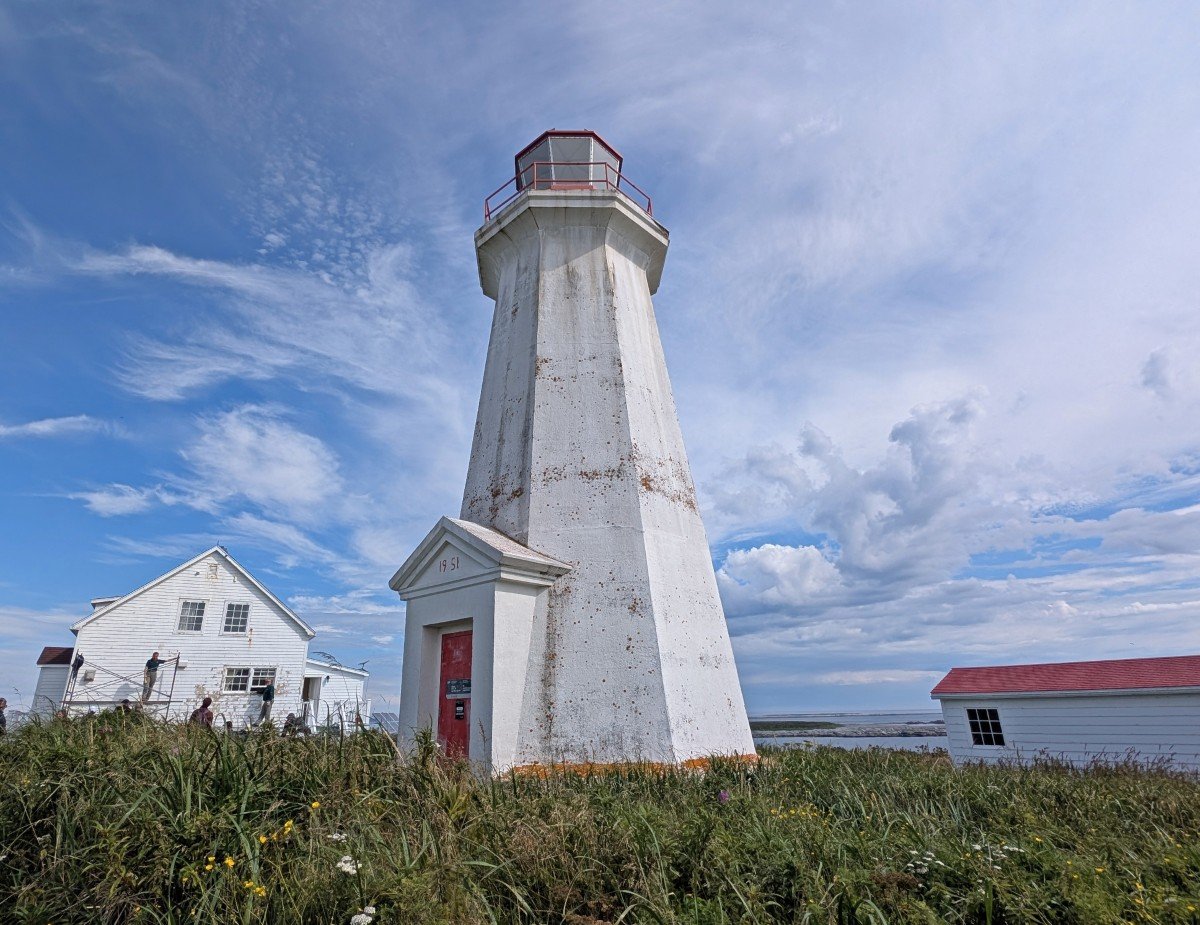
The nearest Innu community to the Archipelago is Ekuanitshit (‘things run aground’) near Longue-Point, also known as Mingan in French. The local Innu used to hunt seal on the islands. To learn more, visit the Maison De La Culture Innue in Ekuanitshit.
In the 15th and 16th centuries, the islands were used by people from the Basque region to fish for cod and hunt for whales (long before Jacques Cartier ‘discovered’ the area). On Île Nue de Mingan, we saw an area with the remains of a stone oven used to melt whale fat.
A French fur trading post was established on Île du Havre in the 17th century. The first lighthouses were built in 1888 (Île aux Perroquets) and 1915 (Petite île au Marteau). Before the national park reserve was established, there were several attempts at settlements, including a fox breeding operation on Île du Havre.
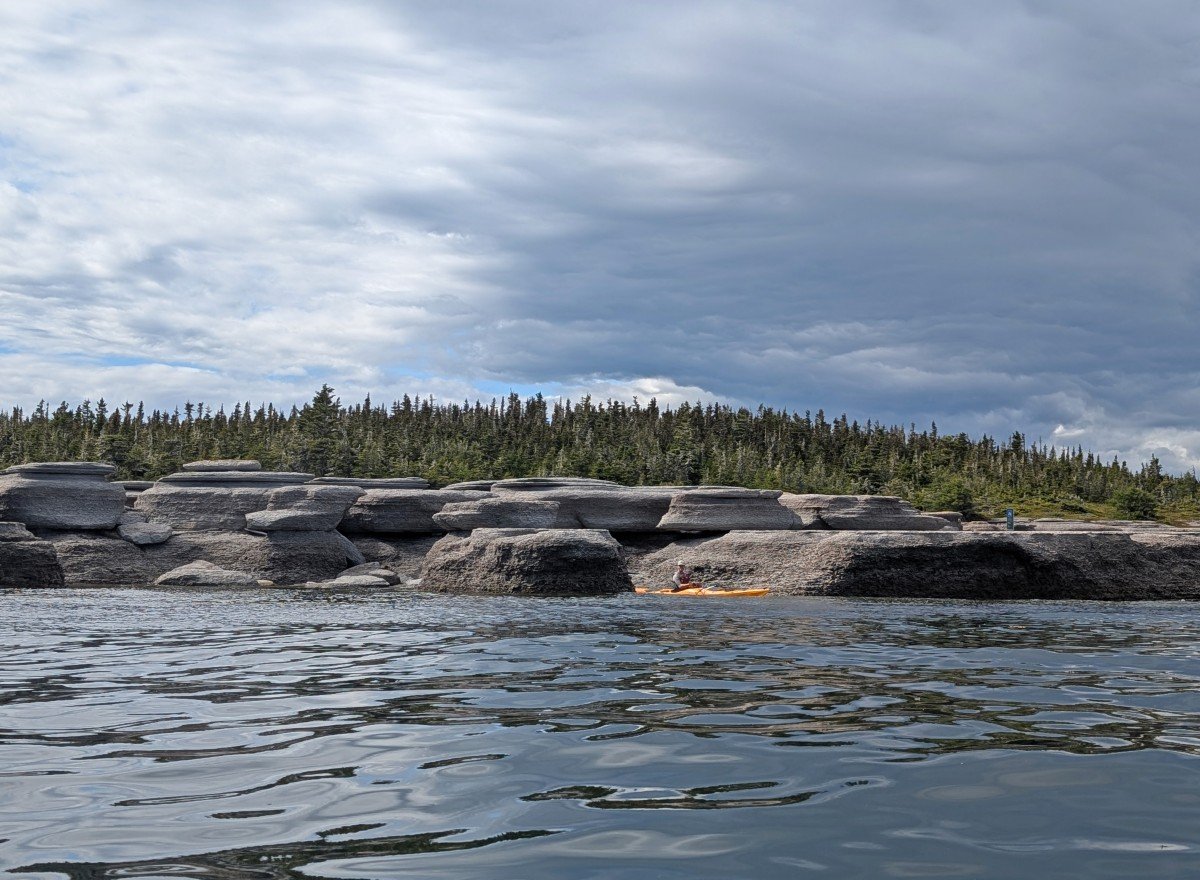
Best things to do in the Mingan Archipelago
Visiting the Mingan Archipelago is all about immersing yourself in nature – exploring the coastal landscapes and spotting the wildlife that calls the area home.
There are 10 main islands with visitor facilities, each with its own character and unique activities. Think lighthouses, seabird colonies, monoliths, shipwreck stories, fossils, hiking trails and clifftop viewpoints and more.
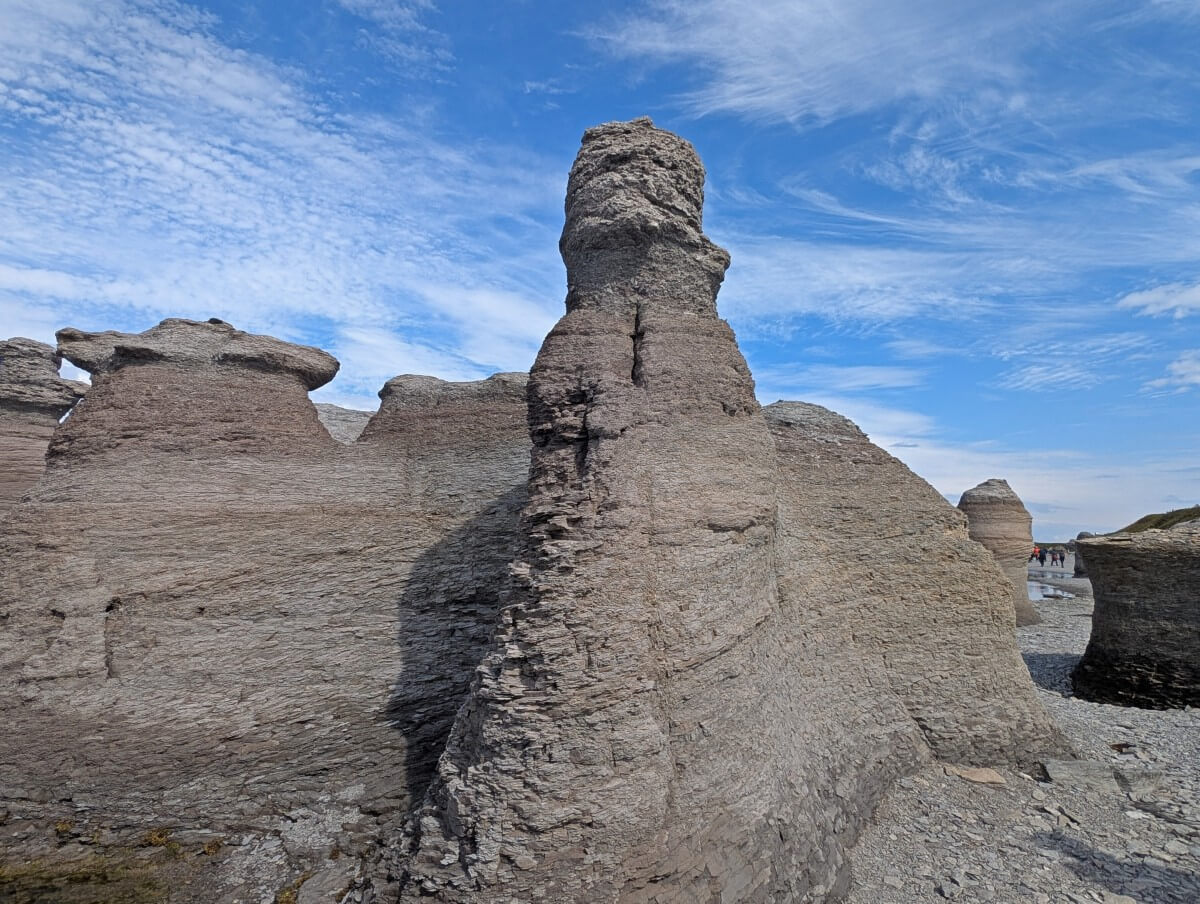
Before we visited, I found it hard to narrow down which island to explore first. Here’s an overview of each one:
- Île aux Perroquets, west sector – lighthouse, puffin and other seabird colonies, shipwreck stories
- Île Nue de Mingan, west sector – monoliths, lots of fossils, tundra style landscape (no trees), 7.8km perimeter hiking trail, camping
- La Grande Île, west sector – 26.6km hiking trail around perimeter, monoliths, camping, Ôasis
- Île Quarry, centre sector – largest mix of scenery, monoliths, choice of hiking trails, camping, oTENTiks
- Île Niapiskau, centre sector – monoliths, 4.1km hiking trail, plant life, camping
- Île du Fantôme, centre sector – monoliths, seabird colonies, shipwreck history
- Île du Havre, centre sector – cliffs, monoliths, 17.2km perimeter hiking trail, camping, Ôasis
- Petite île au Marteau, eastern sector – lighthouse, ocean views, monoliths, short hiking trails
- Grosse Île au Marteau, eastern sector – cliffs, beaches, seabird colonies, monoliths
- Île à la Chasse, eastern sector – monolithes, cliffs, seabird colonies, peat bogs, camping
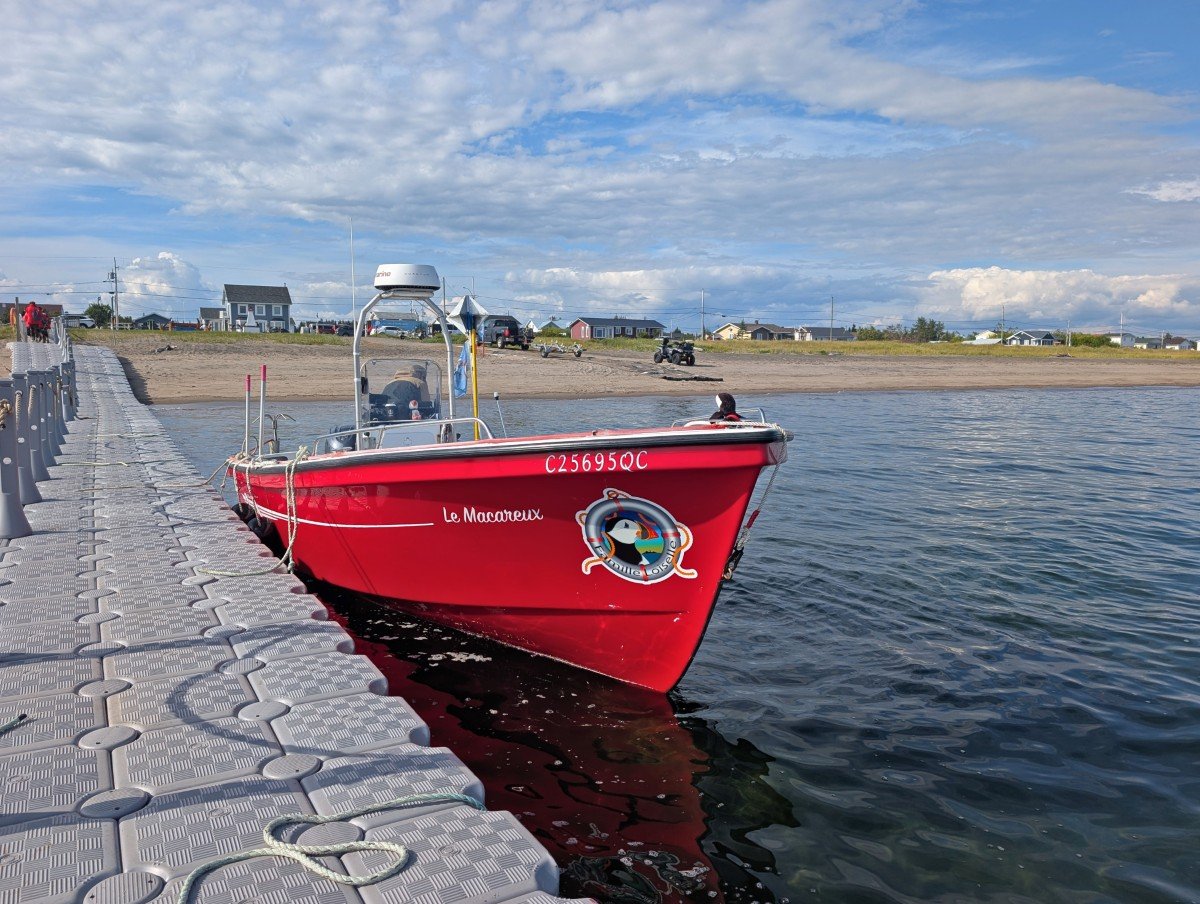
All of these islands have transportation services provided by local boat operators. Depending on the island and tour, it may be possible to land and explore for an hour, a full day or overnight.
Personally, I really enjoyed visiting both Île aux Perroquets and Île Nue de Mingan. The former has spectacular monoliths to view while the latter is interesting for the lighthouse and seabirds. If you want to see puffins, Île aux Perroquets is a must!
When we return to the area, I will definitely prioritise going to Île Quarry. Geneviève, a Parks Canada staff member, shared with me that it has the most diverse landscapes and her favourite monoliths.
Parks Canada interpretation
Parks Canada provides interpretation on five islands during the summer months – Perroquets, Nue de Mingan, Île Quarry, Niapiskau and Fantôme. This usually consists of a 30 to 45 minute guided walk, with the interpreter sharing the specific island’s unique geology, wildlife, and cultural history.
The main presentations are offered in French only but English guests are welcome to speak to the guide individually. Signage and interpretative panels display both English and French.
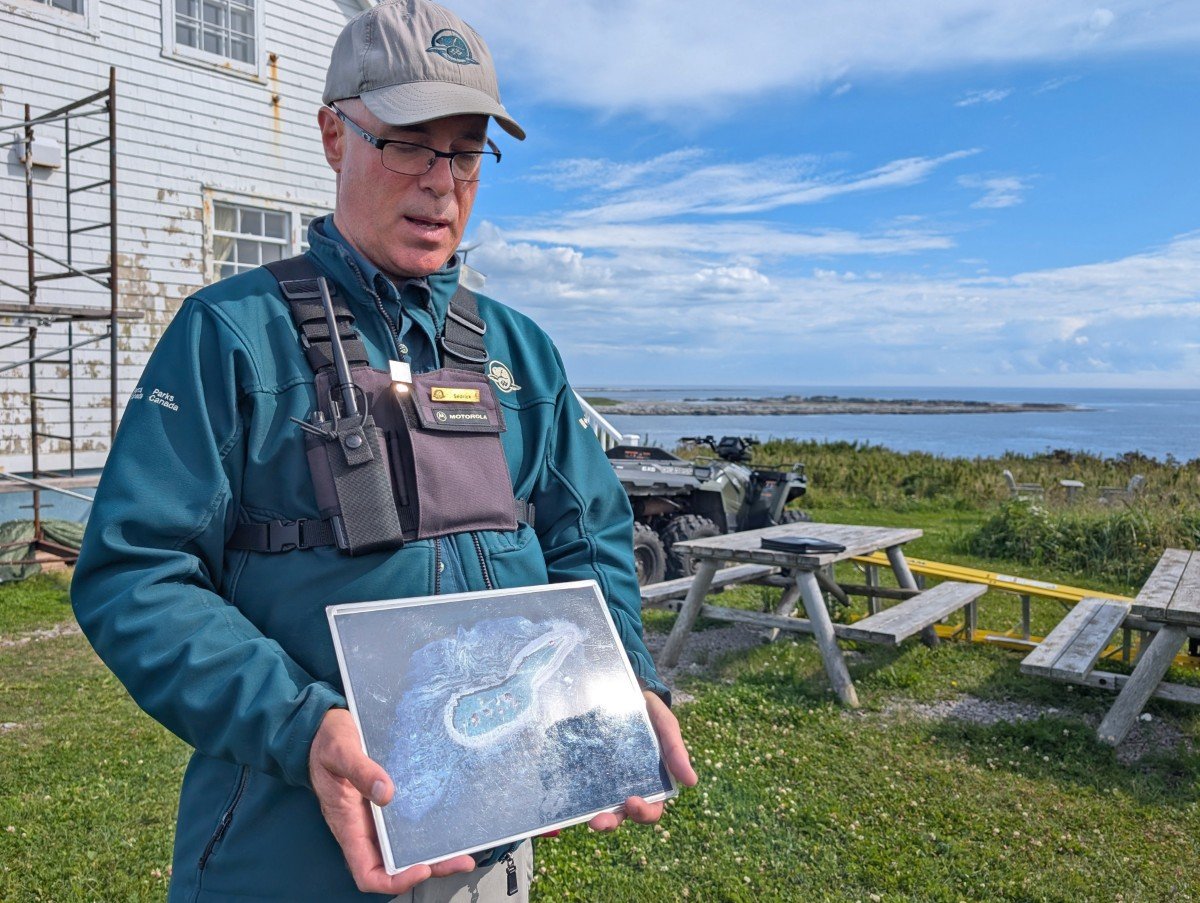
How to get to Mingan National Park
The Mingan Archipelago stretches 90km along Québec’s Côte-Nord. The two main access points are the Longue-Pointe-de-Mingan and Havre-Saint-Pierre. Both of these communities have staffed Parks Canada interpretation centres in the summer months.
There are four Mingan Archipelago boat operators:
- Les Entreprises Touristiques Loiselle, Longue-Pointe-de-Mingan – west sector day tours plus shuttles for campers, hikers
- Excursions du Phare, Longue-Pointe-de-Mingan – west sector day tours plus shuttles for campers, hikers
- Services Maritimes Boreale, Havre-Saint-Pierre – centre and east sector day tours plus shuttles for campers, hikers and divers
- Croisières du Capitaine Richard, Havre-Saint-Pierre – custom day tours to the centre sector
We visited Île aux Perroquets and Île Nue de Mingan with les Entreprises Touristiques Loiselle. While the tour doesn’t offer a ton of time on either island (about 1 hour each), it does provide a great overview.
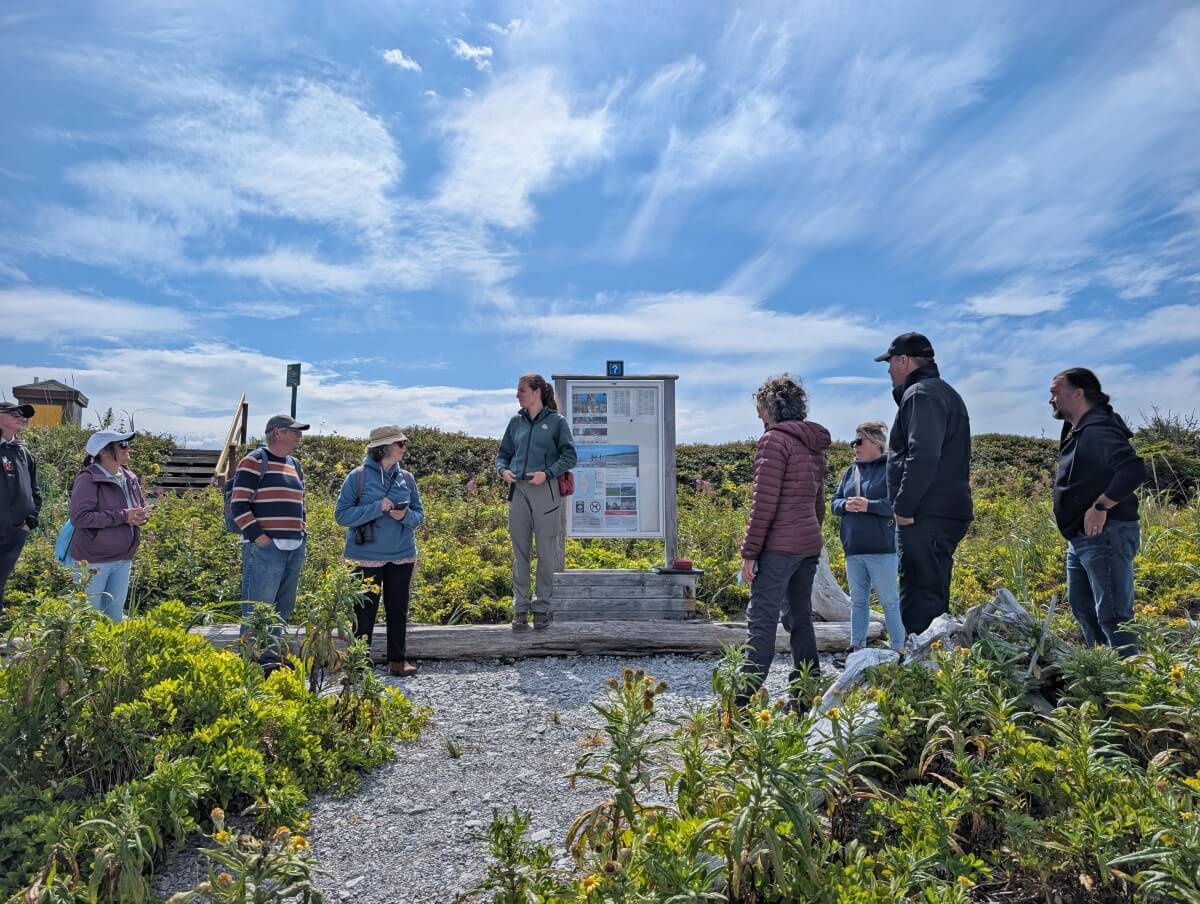
The Parks Canada interpretation is excellent, especially the stories about the lighthouse on Perroquets and the monoliths and fossils on Nue.
While we didn’t see any whales on our trip, there were plenty of seals to spot. One of the boat captains caught some sea urchin with a mop (the local way!) for us to try. JR has always loved urchin, so he was very pleased!
I would recommend booking a week or two in advance if you have a specific date in mind for a boat tour, especially if it is a weekend.
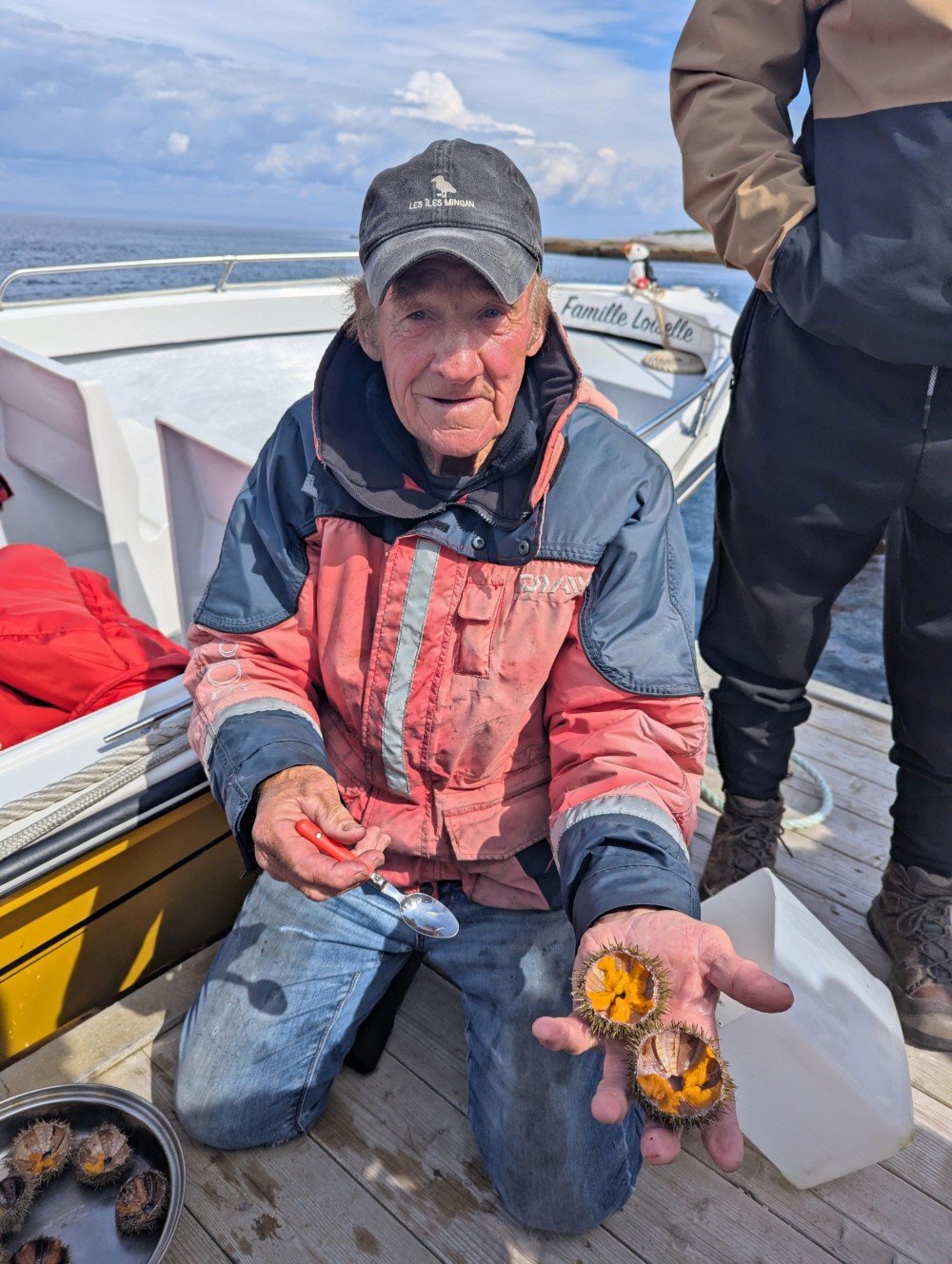
Kayaking to the Mingan Archipelago
Kayak tours are available with Noryak Adventures from Havre-Saint-Pierre or Longue-Pointe-de-Mingan. They offer full day tours as well as a 4 day base camp trip to La Grande Île.
Where possible, they can customise trips to paddler’s abilities and preferences – we love paddling so spent the day circumnavigating Île du Havre, admiring monolithes and other rock formations as we went. We were able to paddle with poiposes as well!
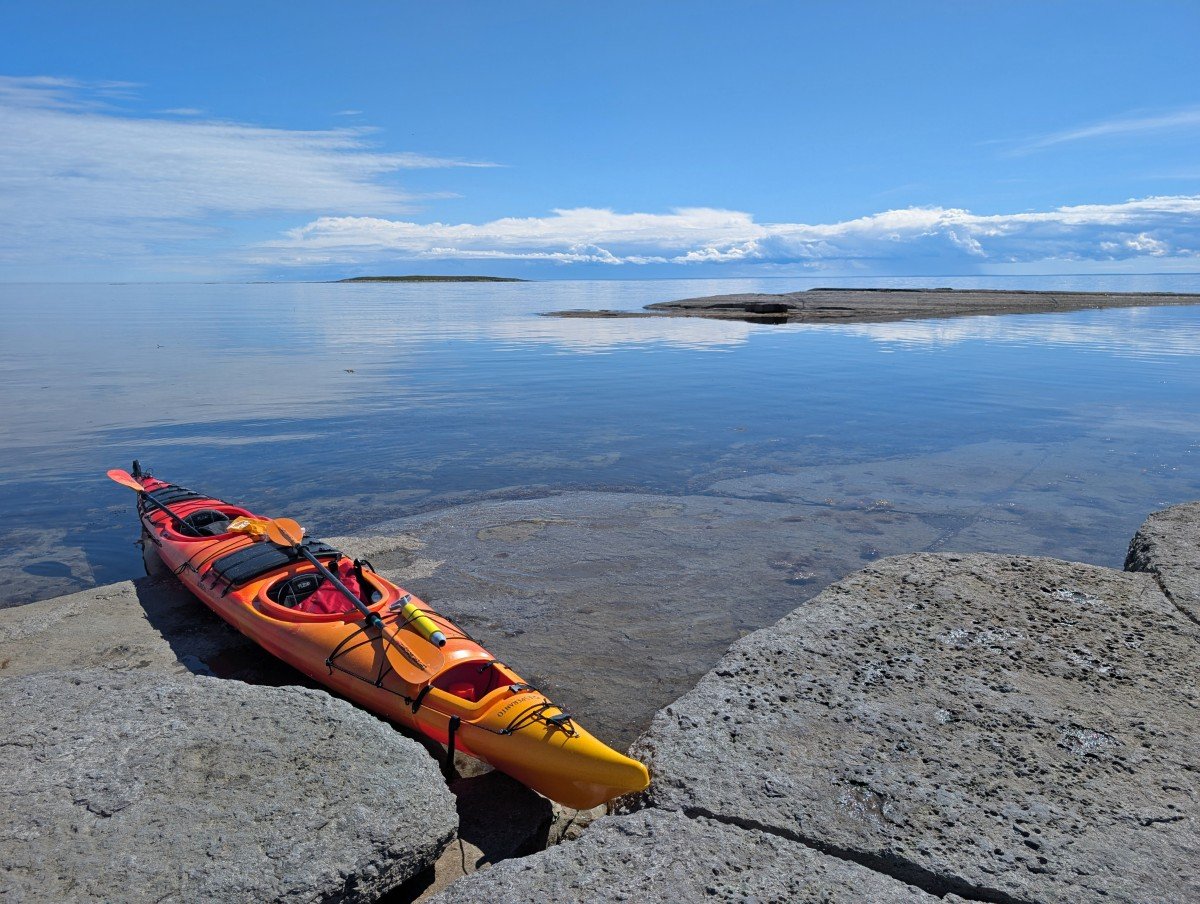
Lunch is included with the day tours – for us, an amazing smoked salmon flatbread with homemade pesto, followed by local berries for dessert.
While it is possible to bring your own kayak and reach the islands that way, Parks Canada doesn’t recommend it. The weather, cold water and currents are pretty unforgiving and you really need to know what you’re doing and be outfitted properly.
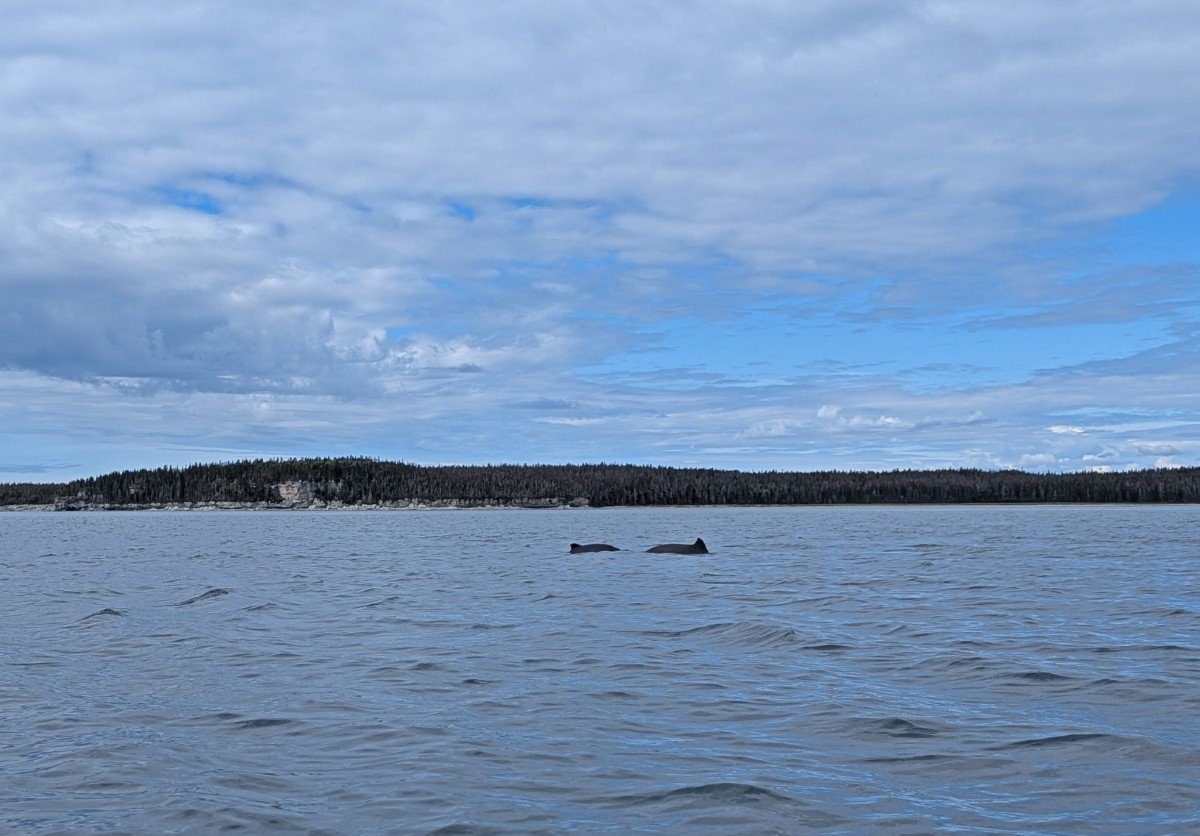
Travelling to Longue-Pointe-de-Mingan and Havre-Saint-Pierre
Longue-Pointe-de-Mingan is 800km from Québec City, about 10 hours when driving non-stop. I’d recommend Tadoussac and Sept-Îles as overnight stops to break up the journey along Highway 138.
There’s lots to see along the way, including several big waterfalls, scenic hiking trails and sand dunes. In Tadoussac, there are plenty of places to try and spot whales from land (we’ve been successful many times!) Head to our Whale Route road trip guide for more details about this incredible road trip.
A quicker option to reach Mingan is to fly into into Sept-Îles and rent a vehicle there. Sept-Îles is two hours drive from Longue-Pointe-de-Mingan.
We flew to Sept-Îles with PAL Airlines – they offer year round daily flights from Québec City and Montreal, convenient for connecting with other destinations. Discounted fares are available for travelling within the province, subsidised by the Government of Québec.
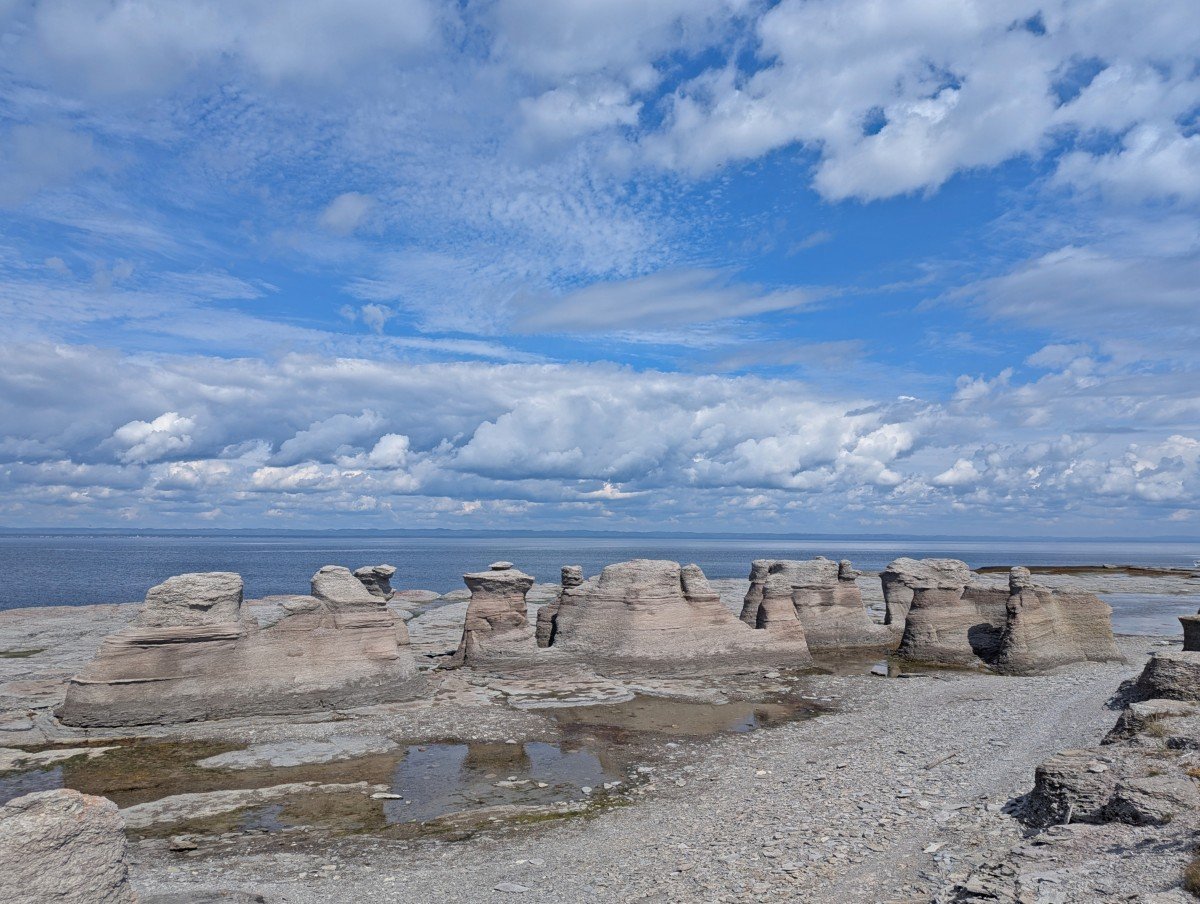
When to visit the Mingan Archipelago
Mid June to early September is the most popular time to visit the Mingan Archipelago. The weather is warmest during this time, boat transportation services are running often, kayak tours are operating and the island campgrounds are open.
After early September, operations start to wind down. There are fewer boat tours, the weather becomes cooler and Parks Canada begins scaling back visitor services, including interpretation programs and staffed facilities. The main interpretation centre in Havre-Saint-Pierre closes in early October.
If seeing puffins is high on your list, definitely plan a Mingan trip for late June to mid August. The puffins arrive in late April to breed but their numbers are highest in July. We were too late to see puffins at the end of August – they had all migrated by then.
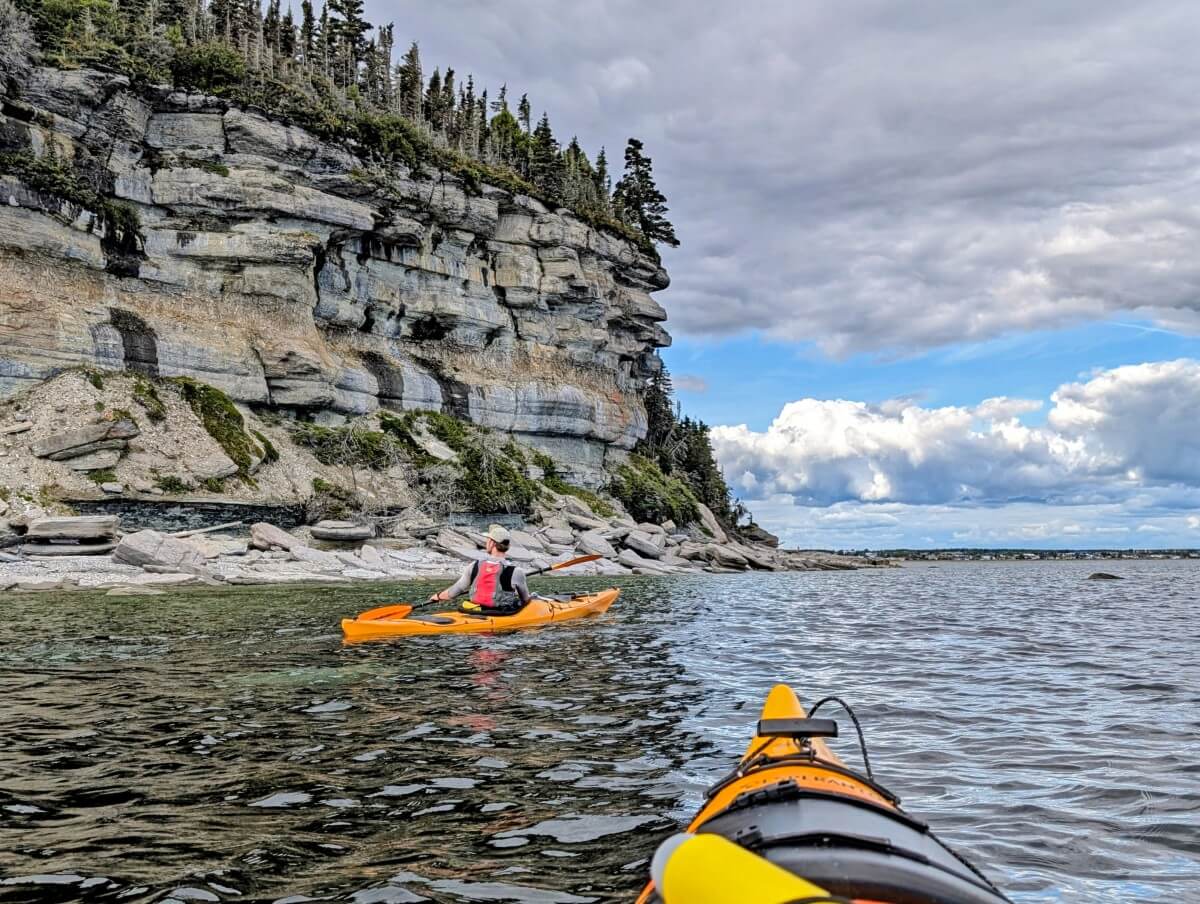
Where to stay
There are two options for staying overnight on the Mingan Archipelago – camping and the Île aux Perroquets lighthouse cottages. Otherwise, plan to book somewhere in Longue Pointe de Mingan or Havre-Saint-Pierre and travel by boat to the islands during the day.
There are 30 campsites across six different islands with glamping options on Île Quarry (oTENTiks), La Grande Île and Île du Havre (Ôasis tear-drop shelters) as well. Local tour operaters run boat shuttles to the cmapgrounds. Camping reservations are available online via the Parks Canada Reservation Service.
While the campsites, oTENTiks and Ôasis are well equipped, keep in mind that you have to carry all of your equipment onto a boat to get there, including all drinking water (at least 2l per day, per person). It is recommended to bring supplies for two extra days since pickup can be delayed by rough ocean conditions.
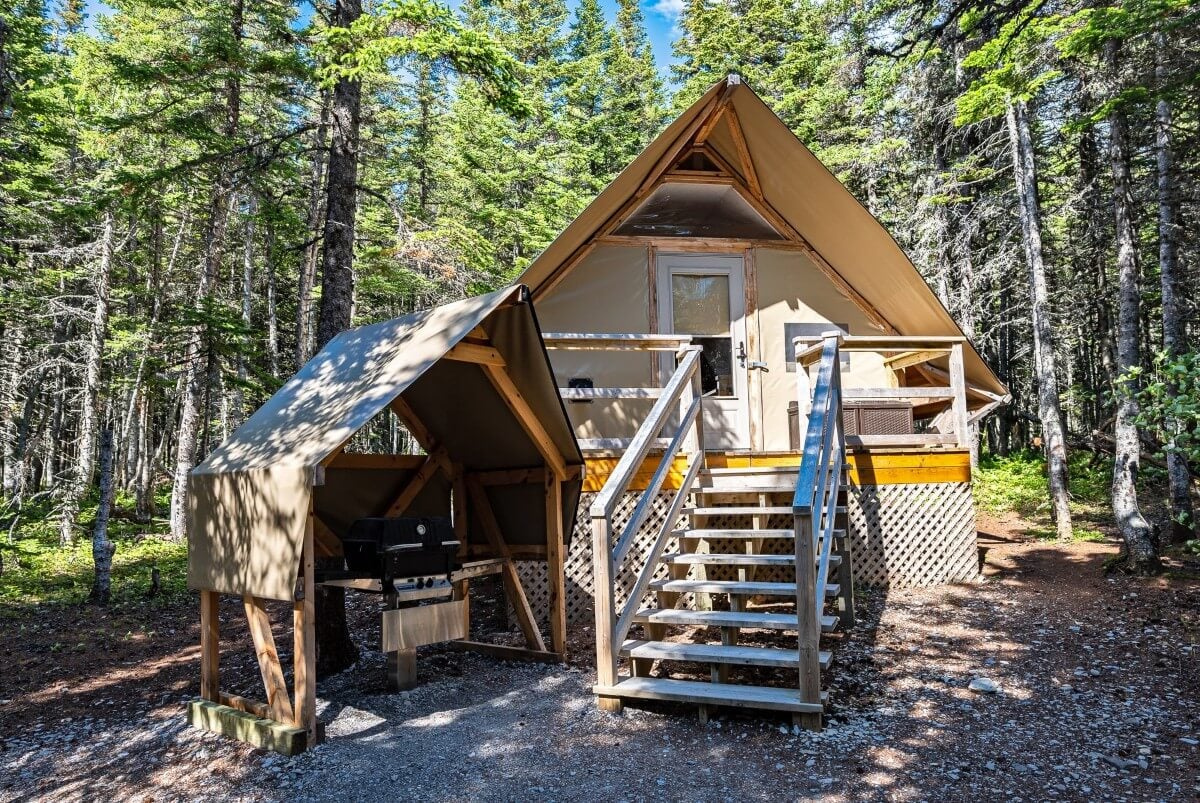
For the 2025 season, boat shuttles were unavailable to land close to some of the Ôasis shelters on Île du Havre. Campers had to hike 2.7km to reach them from the next available drop-off point. Needless to say, packing somewhat light is a good idea!
For those who like the idea of an overnight island escape but not the camping part, nine unique rooms are available on Île aux Perroquets. Housed in the former lighthouse keeper’s cottages, these cosy individually decorated rooms all boast beautiful ocean views.
In Havre-Saint-Pierre, we stayed at Hôtel du Havre, a large property at the edge of town. The decor is a bit dated but the rooms have everything you need for a night or two. It’s very close to the popular Restaurant Chez Julie.
The Famille Loiselle operate a campground in Longue-Pointe-de-Mingan. They have waterfront camp spots, some with services, as well as fully equipped trailer rentals and ready-to-camp cabins.

What to pack
- Warm clothing (layers!) – It can get cool along the St Lawrence coast, even in the summer months. Bring a choice of clothing layers, including a warm jacket. We were provided jackets with built-in PFDs for the Loiselle boat trip
- Warm hat, gloves, scarf/Buff – The boat journey to and from Mingan can feel brisk, regardless of how warm it is on land
- Cash – We found it handy to carry some physical cash when travelling in this area of Québec, for tipping tour guides for example
- Bug repellent – Mosquitoes and blackflies weren’t an issue for us in late August, though they can apparently be annoying earlier in the summer. It’s a good idea to bring repellent and, if you’re sensitive, a head net
- Parks Canada Discovery Pass – If you already have a Parks Canada annual pass, bring it with you to receive free admission into Mingan ($6.50/adult otherwise)
- Binoculars – These are helpful for getting a better look at wildlife while exploring the Mingan Archipelago
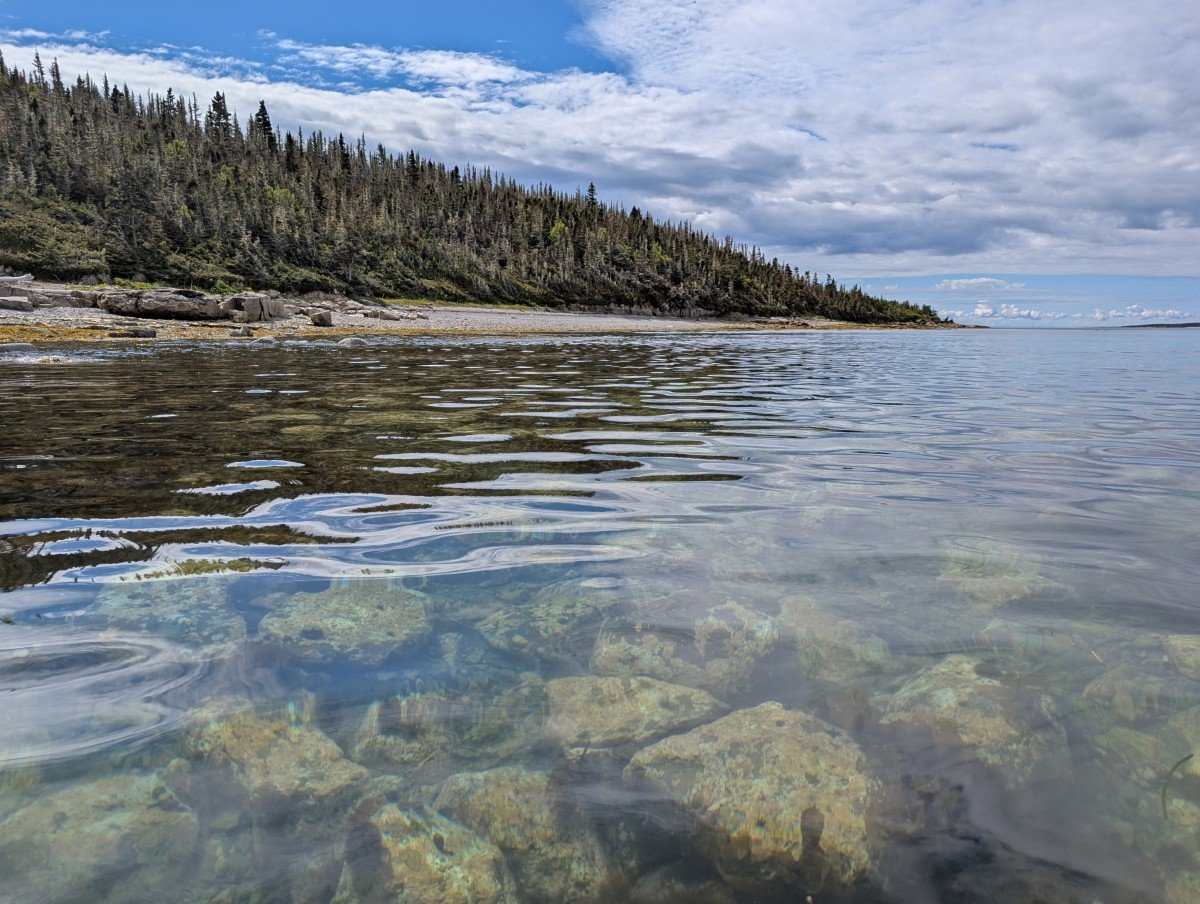
Suggested 3 day itinerary
With our recent experience in mind, here’s what I would do if I was visiting the Mingan Archipelago for three days for the first time. This itinerary uses Havre-Saint-Pierre as a base.
- Day 1 – Arrive in Longue-Pointe-de-Mingan and visit Parks Canada interpretation centre and/or the Mingan Island Cetacean Study Interpretation Centre. Check in for your pre-booked 11.30am Les Entreprises Touristiques Loiselle tour to Île aux Perroquets and Île Nue de Mingan. Stay at a hotel in Havre-Saint-Pierre
- Day 2 – Choice of full day kayak trip with Noryak OR Services Maritimes Boreale shuttle to Île Quarry for hiking (optional additional shuttle to Île Niapiskau as well). Return to Havre-Saint-Pierre
- Day 3 – Visit Parks Canada interpretation centre in Havre-Saint-Pierre and finish trip with a hike on the nearby Cap Ferré Trail (monoliths, great ocean views, fossils)
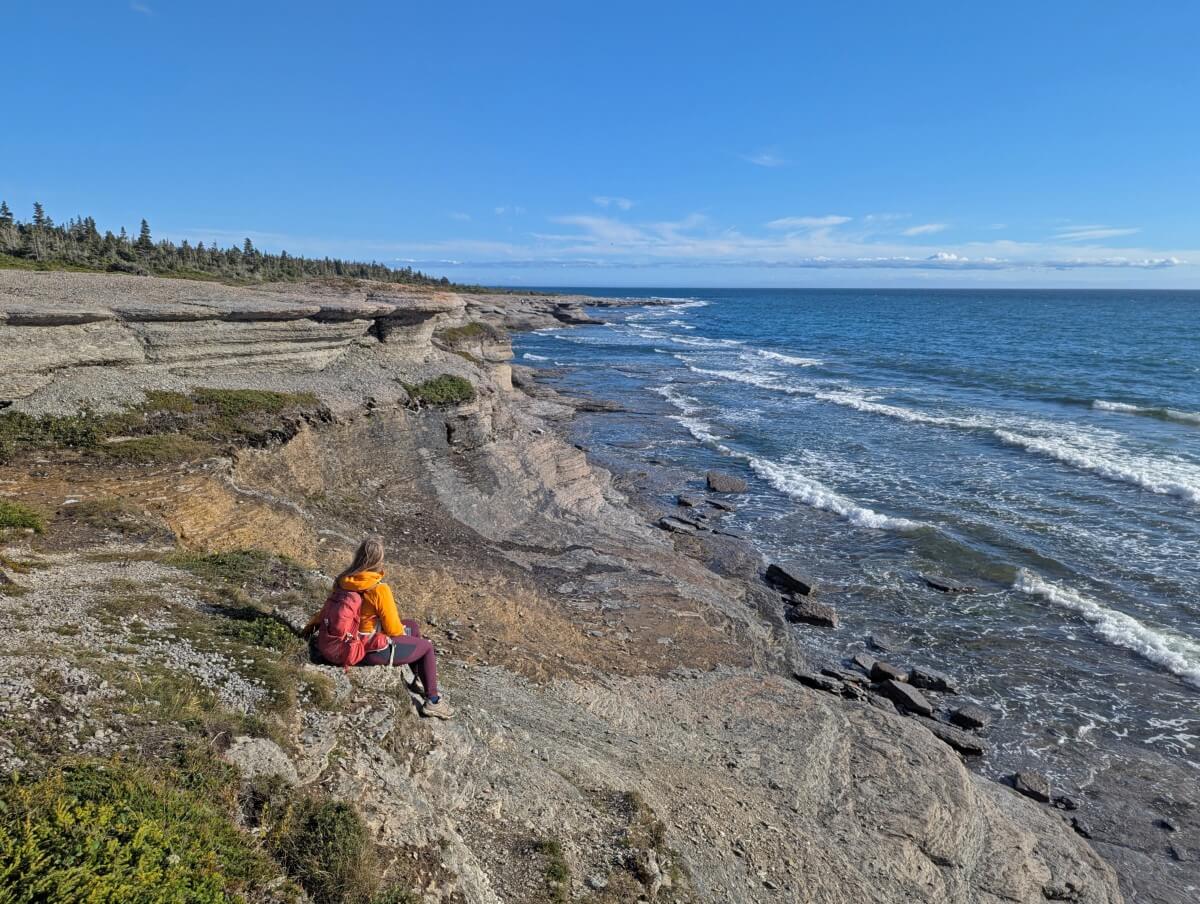
Final travel tips
Havre-Saint-Pierre is significantly larger than Longue-Pointe-de-Mingan. It has a much bigger choice in accommodation, restaurants and shops.
Phone signal is limited between Sept-Îles and Longue-Pointe-de-Mingan. Keep this in mind if driving to Longue-Pointe-de-Mingan or Havre-Saint-Pierre for a reserved boat tour. If you’re running late, you won’t be able to call the operator.

Bring your own food on boat tours. Unless specifically noted, lunch and snacks are not included on the boat tours to Mingan. Lunch was provided with our Noryak kayak tour.
Learn some French. While a lot of people working in local tourism speak English, it is polite to know at least the basics. Hello (bonjour), thank you (merci) and please (s’il vous plait) will be welcomed! As mentioned, all Parks Canada tours on Mingan are in French only.
Try the local cuisine. We had the chance to eat fresh sea urchin on both of our Mingan island tours. It’s a popular local delicacy (and one of JR’s favourites) and I would recommend taking the chance to try it!
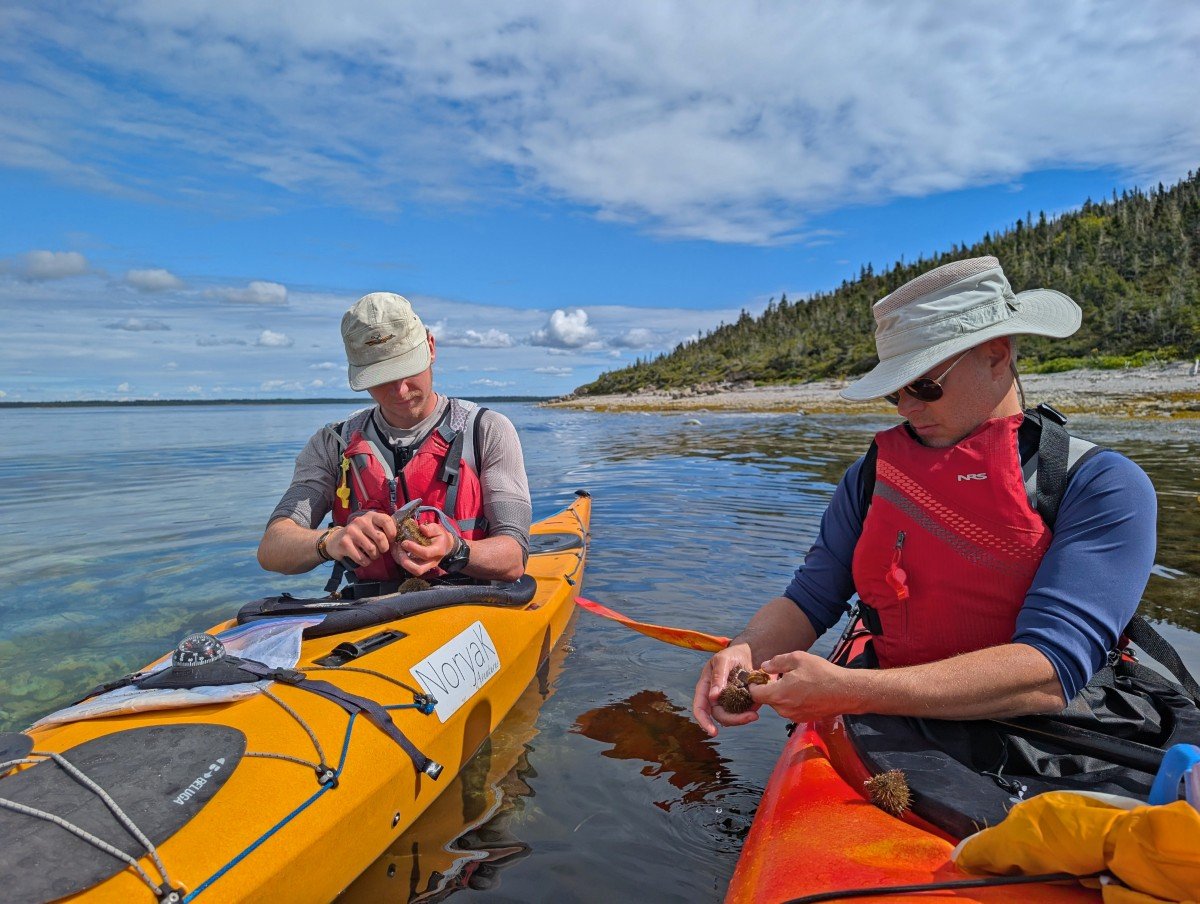
Explore more of the Whale Route if you can. The Mingan Archipelago is a highlight of Highway 138 but there is lots more to see. It’s easy to spend a week exploring Québec’s Côte-Nord region. We have a road trip guide with all the details!
Remember to Leave No Trace to help keep Mingan beautiful! Stay on hiking paths, pack out everything you bring (including trash), don’t take any fossils home, do not climb on the monoliths. Dogs are not permitted on the islands.
Stay safe. Keep your distance from cliffs – rockfall is possible at any time. Watch your footing on slippery surfaces, especially those covered with seaweed. Look for signage regarding tide cut-offs on beaches. Bring drinking water with you.
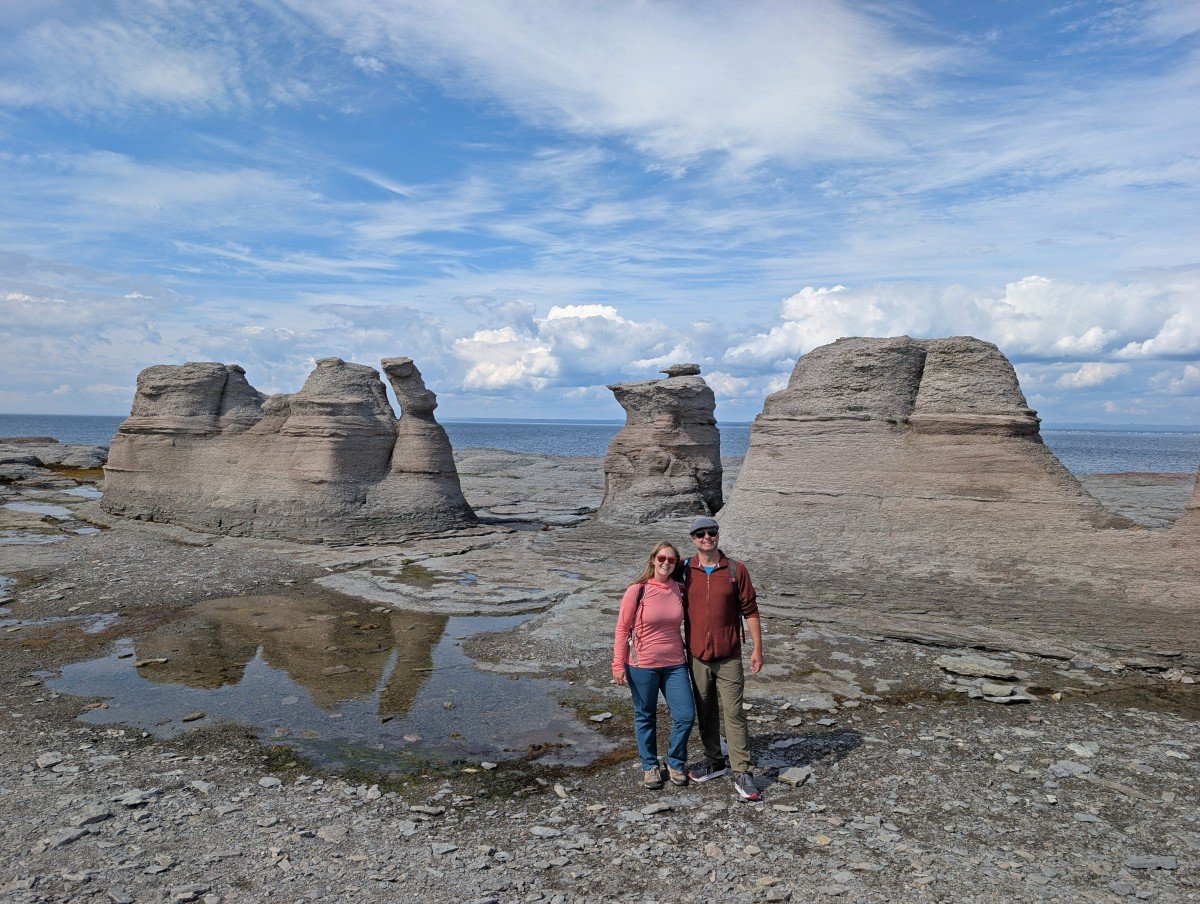
Discover more Québec posts
Ultimate Two Week Coastal Quebec Road Trip Itinerary
Best Things to Do in Témiscamingue: Opémican National Park & Beyond
10 Fast and Fun Gaspé Peninsula Hiking Trails, Québec
Magdalen Islands Travel Guide: The Best Things to Do, See & Eat
Four Fun Ways to Go Whale Watching in Tadoussac, Quebec
The Best Places to Camp on the Gaspé Peninsula
Check out these recently published posts:

One half of the Canadian/British couple behind Off Track Travel, Gemma is happiest when hiking on the trail or planning the next big travel adventure. JR and Gemma are currently based in the beautiful Okanagan Valley, British Columbia, Canada. Consider buying us a coffee if you have find any of our guides helpful!

